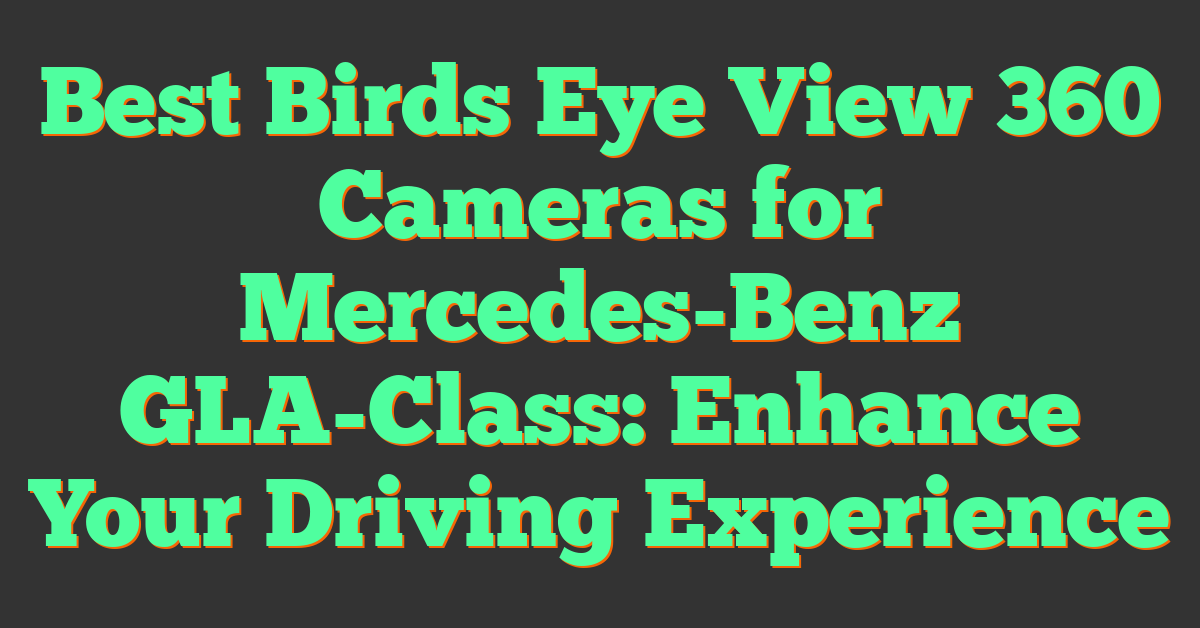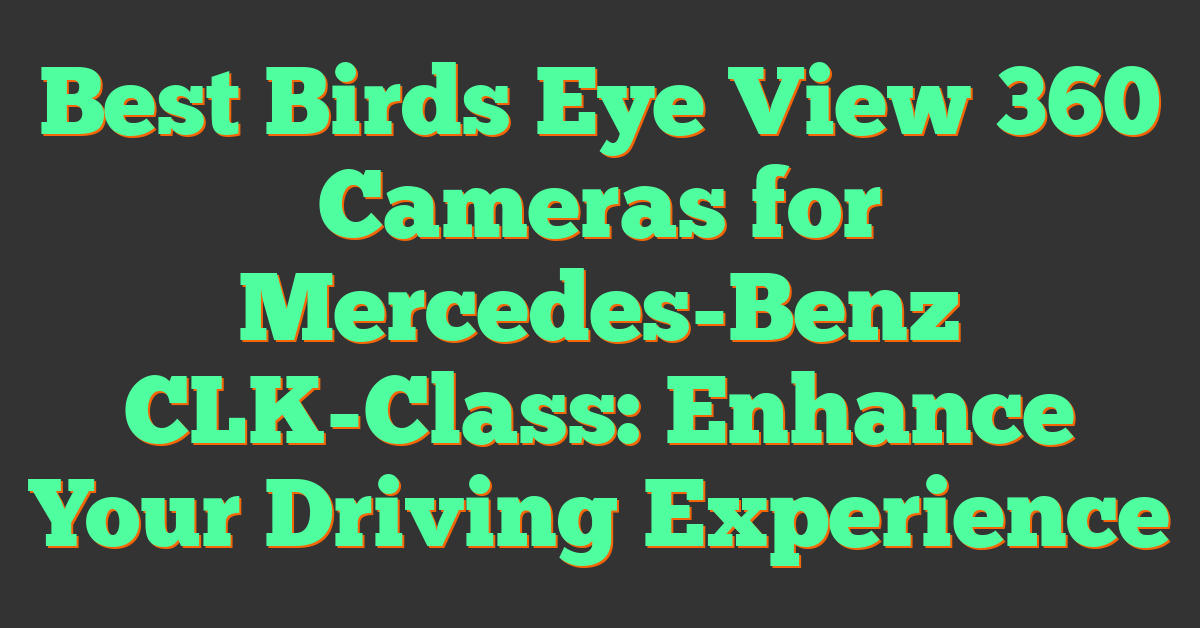Key Takeaways
- 360 cameras capture a full panoramic view, offering an immersive and interactive experience, unlike the fixed field of view available in traditional cameras.
- Dual-lens technology and advanced stitching software enable 360-degree capture, creating seamless spherical images and videos.
- Key features of 360 cameras, such as built-in stabilization, high resolution, and app integration, make them ideal for virtual tours, VR content, and action-packed scenarios.
- Differences in use cases between 360 and traditional cameras highlight their unique strengths — 360 cameras excel in immersive environments, while traditional cameras remain better for detailed, controlled shots.
- Challenges like higher costs and technical expertise for editing 360 content can be barriers, but advancements like AI-powered enhancements are simplifying workflows.
- Future innovations in 360 technology, including improved sensors, modular designs, and VR/AR capabilities, promise to push the boundaries of immersive content creation.
Capturing the world around us has always been fascinating, but 360 cameras have completely changed the game. Unlike traditional cameras that focus on a single frame, 360 cameras let you immerse yourself in a full panoramic view, creating a more dynamic and interactive experience. It’s like stepping into the scene rather than just observing it.
What makes these cameras truly unique is their ability to capture everything in every direction simultaneously. Whether you’re documenting an adventure, creating virtual tours, or experimenting with creative storytelling, 360 cameras offer possibilities that traditional cameras simply can’t match. Ready to explore what sets them apart? Let’s dive in.
Understanding 360 Cameras
360 cameras bring a game-changing perspective to photography and videography. By capturing a complete panoramic view, they open up creative possibilities that traditional cameras can’t offer.
How 360 Cameras Work
360 cameras record everything in a 360-degree sphere, both horizontally and vertically. These devices use two or more wide-angle lenses, typically fisheye lenses, to achieve this. Each lens captures half of the environment, and built-in software stitches the images together into a seamless, spherical image or video.
Most 360 cameras rely on advanced algorithms for stitching, ensuring minimal visible seams in the final content. Optical sensors in these cameras are designed to handle varying light conditions, making them capable of capturing environments as diverse as sunlit landscapes or dim indoor spaces.
Key Features of 360 Cameras
- Full-Sphere Capture: Unlike single-frame cameras, 360 devices record every angle, making them ideal for immersive imagery in virtual reality (VR), real estate tours, and outdoor adventures.
- Compact Design: Despite their advanced capabilities, many models are lightweight and portable, simplifying on-the-go shooting.
- Stabilization: Built-in stabilization ensures smooth video content, even in dynamic environments like biking trails or crowded city streets.
- High Resolution: Modern cameras reach up to 5.7K or higher in video quality, resulting in detailed, professional-grade visuals.
- App Integration: Most devices sync with mobile apps, allowing real-time interaction, editing, and sharing, whether you’re creating VR content or social media clips.
By combining these features, 360 cameras empower photographers and videographers to reimagine their creative projects in ways limited by traditional cameras.
Comparing 360 Cameras to Traditional Cameras
Understanding the differences between 360 cameras and traditional cameras can help photographers and videographers choose the right tool for their creative projects. Each has unique strengths that cater to specific needs and styles of capturing the world.
Field of View
A 360 camera captures the entire environment in a spherical view, creating an immersive image or video. Traditional cameras offer a fixed field of view, limited to the angle of the lens, such as 35mm or 50mm. For example, while a wide-angle lens on a traditional camera might capture 120 degrees, a 360 camera records a full 360-degree sphere. This makes 360 cameras ideal for creating panoramic content, virtual reality experiences, and interactive footage that allows viewers to explore scenes freely.
Image and Video Quality
360 cameras deliver high-resolution footage, with modern models featuring resolutions up to 5.7K for detailed spherical content. Traditional cameras, however, often excel in dynamic range and sensor size, resulting in superior image clarity and depth. For instance, a DSLR might handle low-light situations better due to larger sensors, but advancements in 360 cameras now include HDR capabilities, improving light balance and overall image quality. The stitching process in 360 photography slightly reduces sharpness compared to single-frame images, yet the immersive perspective it provides enhances storytelling.
Use Cases and Applications
« Drone 360 Cameras: Master These Best Practices for Captivating Aerial Shots
360 cameras excel in unique scenarios like creating virtual tours, immersive travel vlogs, and VR content. They’re perfect for activities where interaction and storytelling matter, like real estate walkthroughs and action sports. Traditional cameras, with their precise control over aperture, focus, and composition, remain the go-to for portrait photography, macro shots, and cinematic productions. I find that 360 cameras are transformative for events where capturing the full ambiance matters, such as weddings or concerts, while traditional cameras work better for tight, detail-oriented shots.
Advantages of Using 360 Cameras
360 cameras open up creative and technical possibilities that traditional cameras can’t achieve. Their ability to capture every direction simultaneously transforms how we think about photography and videography.
Immersive Experiences
360 cameras provide a uniquely immersive experience by capturing the full panoramic view of an environment. This spherical perspective allows viewers to explore a scene as if they were physically present, which isn’t achievable with traditional cameras. For example, I’ve used 360 footage to transport viewers into the middle of a mountain trail or an underwater dive, delivering an experience that feels interactive and engaging.
This feature plays a vital role in virtual reality (VR). VR content depends exclusively on 360 capture to create fully engulfing environments, making this technology essential for VR storytelling, gaming, and virtual tours. Viewers can navigate these environments freely, gaining a level of control that significantly enhances the impact of the content.
Versatility in Content Creation
The flexibility of 360 cameras supports diverse forms of content creation. They simplify creating panoramic photos or videos without stitching multiple images manually, ideal for real estate virtual tours or large-scale event coverage. For instance, I’ve often turned a single 360 recording into multiple dynamic 2D shots by reframing scenes during post-production, offering freedom in editing that a traditional camera doesn’t provide.
User-friendly features, like built-in stabilization, allow even action-packed scenes to appear smooth and professional. This makes 360 cameras perfect for capturing adventure sports or dynamic crowd scenes. Many models also work seamlessly with editing apps, enabling real-time sharing, reframing, or live-streaming across platforms.
By using 360 cameras, photographers and videographers gain the ability to explore storytelling angles that are inaccessible with standard cameras, boosting creativity while saving time.
Challenges and Limitations of 360 Cameras
Equipment Cost
The initial investment in a 360 camera can be higher compared to traditional DSLR or mirrorless setups. While entry-level models start around $200, professional-grade options like the Insta360 Titan or GoPro MAX exceed $5,000. Accessories like stabilization mounts, waterproof cases, and spare batteries can add significantly to the cost. For photographers and videographers used to budget-friendly gear, this creates an upfront barrier.
Technical Skills Required
Capturing and editing 360 content demands specific technical knowledge. Unlike traditional photography, where framing and angles are planned, 360 cameras capture everything, which necessitates precise post-production work. Stitching software is often required to merge footage, and any stitching errors or misalignments need manual adjustment. For those unfamiliar with specialized editing tools like Adobe Premiere Pro or Insta360 Studio, the learning curve can feel steep. Additionally, managing large file sizes and ensuring optimal resolution for VR platforms requires advanced workflow strategies.
Future of 360 Cameras in Photography
360 cameras are reshaping photography by enabling immersive, interactive content like never before. Their future holds exciting possibilities as technology advances further.
Emerging Trends
AI-powered enhancements are becoming a core focus in 360 camera developments. Companies are integrating AI to automate editing tasks, such as stitching, object recognition, and shot framing. These features help photographers save time while improving content quality. For example, AI-auto reframing in certain models adjusts perspectives to create engaging, directed footage from spherical video.
Live-streaming capabilities are also gaining traction. Many new 360 cameras support seamless 4K or higher live-streaming on platforms like YouTube and Facebook, enabling creators to share real-time, panoramic experiences. As demand for virtual experiences grows, I expect this trend to expand significantly in both personal and professional use cases.
Compatibility with augmented reality (AR) and virtual reality (VR) platforms demonstrates another emerging area. Many industries, from real estate to education, are incorporating 360 content into VR applications. This integration not only opens doors for storytelling but also creates a new market for creative professionals skilled in interactive media production.
Potential Innovations
Sensor upgrades could revolutionize 360 camera performance. Advances in sensor technology might address current image quality limitations, like low-light performance and dynamic range, putting future 360 cameras closer in quality to high-end traditional cameras. For instance, larger sensors and improved HDR capabilities could enhance spherical imagery for its use in professional settings.
Compact and modular designs could redefine versatility. Designers might create interchangeable lens systems or foldable gear, making professional-grade 360 cameras portable without sacrificing advanced features. Some manufacturers are already exploring modular components like microphones and external storage to improve functionality.
Improved VR support and interactivity tools appear on the horizon. As VR ecosystems grow, cameras capable of directly embedding interactive elements like hotspots or audio cues into footage will likely emerge, creating highly engaging content for viewers. This is especially relevant for industries like tourism and event videography.
Rapid advancements in software integration and cloud-based workflows could streamline 360 content management further. Online editing platforms might get smarter, allowing photographers to edit 360 content directly in their browsers while accessing powerful computational resources. This would eliminate the need for expensive hardware upgrades.
Conclusion
360 cameras have redefined how we capture and share moments, offering a level of immersion that traditional cameras simply can’t match. Their ability to record every angle at once opens up endless creative possibilities, from virtual tours to action-packed adventures.
While they come with challenges like higher costs and technical learning curves, the rapid advancements in technology are making them more accessible and versatile. With trends like AI-driven editing and AR/VR integration on the horizon, 360 cameras are set to become even more powerful tools for storytelling.
Whether you’re a content creator, an adventurer, or just someone looking to explore new perspectives, 360 cameras offer a unique way to push creative boundaries. There’s no doubt they’re shaping the future of visual media.















